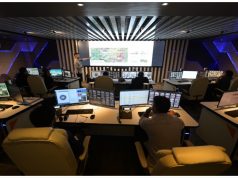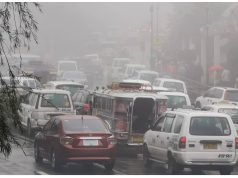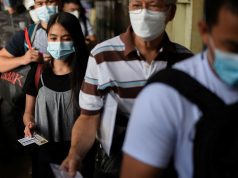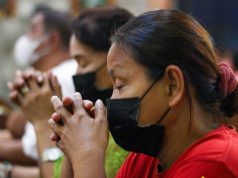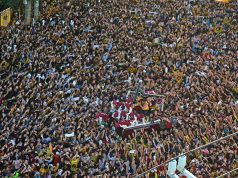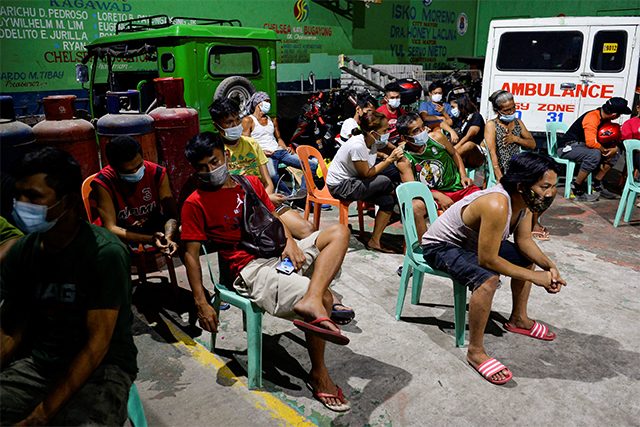
The government could not achieve the ideal contract tracing ratio amid the recent surge in COVID-19 infections despite it claiming it has enough contact tracers last week.
Interior Undersecretary Jonathan Malaya said that the ratio, which was introduced by Baguio City Mayor Benjamin Magalong, is hard to achieve due to the current rate of COVID-19 patients.
Magalong, who is also the country’s contact tracing czar, said that there should be one contact tracer for every 30 to 37 people who made close contact with a COVID-positive person in urban areas.
In rural areas, meanwhile, there should be one contact tracer for every 25 to 30 close contacts in the area.
His strategy was introduced before the recent spike in COVID-19 cases.
Malaya admitted that it is “virtually impossible” to achieve and explained that for every COVID-positive person, contact tracers will reach out to at least 30 of his close contacts.
When one of them tests positive, another 30 of his or her close contacts would be needed to be monitored, and so on.
“So exponential ‘yung pagtaas and we do not have that many na tao na nagko-contact trace,” Malaya said in a Sunday interview.
“Kapag nilagay mo talaga is 1:30, hindi kakayanin, given that this situation now na araw-araw meron tayong 7,000 cases. Virtually impossible ‘yung ganitong ratio,” he added.
The DILG official said that they have already deployed 10,000 contact tracers in Metro Manila. Government agencies have also deployed their personnel to help in the contact tracing efforts.
“All in all, the total number of contact tracers in the country is 225,000, including police personnel,” Malaya added.
He also said that local government units (LGUs) will be “recapacitated” to improve their contact tracing efforts.
Sufficient contact tracers?
Days before his interview, Malaya last Thursday claimed that the country’s contact tracing capacity remains strong a year into the pandemic.
“Even without the DILG hiring, we already have a sufficient number of contact tracers… There’s nothing to worry about,” he was quoted as saying in a report.
“With our number of CTs (contact tracers), we have exceeded DOH standard. Per the DOH, the ideal contact tracer to population ratio is 1:800 so to fully cover 108 million Filipinos, we actually need a total of 135,000 contact tracers only,” the DILG official added.
Malaya in a Saturday interview likewise said that the country has enough contact tracers at that time.
The same day, a Twitter user claimed of having a friend who was infected by the virus but whose contacts were not reportedly reached out by the government.
“My friend had COVID (he’s doing okay). He filled up half a dozen pages for contact tracing 5 days ago, including employer address, places he’s been, people he’s been in contact with, including all their phone numbers. None of these people have been contacted by the gov’t. Zero,” he tweeted.
Other Filipinos claimed of having similar experiences in the replies thread.
“When my dad tested positive, we were contacted by the contact tracing team 14 days after. Buti na lang kami lang talaga close contact, and we were responsible enough to self-quarantine,” another Twitter user wrote.
“Same. When I got tested positive. 11th day of my quarantine pa may nag-contact sa’kin,” shared a different online user.
Another Twitter user commented that “it depends on the local government” and added of him being contacted lots of times.
“I guess it depends sa local gov’t. Kasi sa’min ilang beses na ako na contact at ‘di lang masabing na-contact. Pag ‘di ka na-reach, mag-text sila then may follow up call pa,” he wrote.
Earlier this month, the House of Representatives found out through a joint hearing that the country does not have a unified contact tracing system yet despite being more than a year in quarantine.
LGUs were reportedly having a hard time contact tracing individuals due to lack of fundamental data such as phone numbers and full addresses.
Poor interconnection and data sharing between solution providers and the health department’s central database were also observed.
Magalong that time lamented that he was not consulted by developers of various contact tracing applications.
He added that while it was okay for LGUs to have different contact tracing apps, it should still be integrated with StaySafe.ph which is being endorsed by the national government.
The World Health Organization said that contact tracing is “essential public health tool for controlling infectious disease outbreaks.”
It added that when it is systematically applied in healthcare systems, along with the efforts of the government, it can “break the chains of transmission of an infectious disease.”




